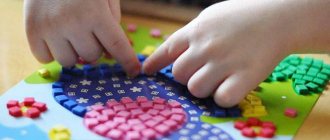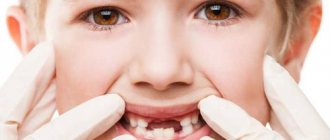All children go through a stage of clumsiness as they grow and develop. If complaints of coordination difficulties and fine motor skills persist after age 7, it is necessary to determine whether the child has dyspraxia.
Dyspraxia ("clumsy child" syndrome, coordination awkwardness, difficulties in motor reactions) is a disorder of the motor system when a child has difficulty coordinating his actions while performing complex and purposeful movements, but at the same time he has neither paralysis nor muscle tone disorders .
Between 6 and 20% of children suffer from dyspraxia. According to the results of recent studies, impaired development of motor functions is detected in approximately 50% of children with consequences of hypoxic-ischemic brain damage during the perinatal period.
Up to 10% of English people experience symptoms of dyspraxia, with men suffering 4 times more often than women. English actor Daniel Radcliffe admitted in 2008 that he suffers from this disorder, but his illness is mild, and his biggest difficulty is tying his shoelaces.
A set of exercises to strengthen the tip of the tongue; methodological development
A set of exercises to strengthen
tip of the tongue
Recommendations for conducting exercises
1. Articulation gymnastics should be carried out daily so that the skills developed by the child are consolidated. It is better to perform the exercises 3-4 times a day for 3-5 minutes.
2. Each exercise is performed 5-7 times.
3. Static exercises are performed for 10-15 seconds (holding the articulatory pose in one position).
4. Go from simple exercises to more complex ones.
5. Of the exercises performed, only one can be new; the second and third are given for repetition and consolidation.
6. Articulation gymnastics is performed while sitting, since in this position the child has a straight back, the body is not tense, and the arms and legs are in a calm position.
7. Carry out gymnastics in front of a wall mirror.
Exercises
1. Biting the tongue with teeth over its entire surface, gradually sticking out the tongue and retracting it again.
2. A sluggish, calm tongue is inserted between the lips, the mouth is slightly open, but not wide. The child says: five-five-five.
3. "Comb". Scratching the tongue on the upper teeth.
4. Forcefully inserting the tongue between closed teeth
5. Spitting rice, peas, seeds from the tip of the tongue.
6. Licking drops of sweet water with the tip of the tongue from the concave surface of spoons (table, dessert, tea).
7. Licking plates
8. Counting the teeth, resting the tip of the tongue on each one.
9. Turning cubes of bread crusts and walnuts in your mouth.
10. Nut.
The tip of the tongue presses forcefully against one cheek or the other.
11. Hold a cocktail straw on the upward-curved tip of your tongue against your upper teeth, then against your upper lip.
12. Swing.
The mouth is wide open, the tongue moves up and down, behind the upper teeth - behind the lower teeth.
13. Delicious jam.
Licking the upper and lower lips alternately. Circular licking of lips.
14. Needle.
To make your tongue sharp - stretch your tongue towards the mirror.
15. Horse.
Smile, click your tongue loudly and energetically. The lower jaw is motionless, only the tongue moves.
16. Turkey.
Smile, open your mouth, raise your tongue to your upper lip and curl it up. Move your tongue back and forth along your upper lip, saying: blah blah blah.
17. Brushing our teeth.
Move the tip of your tongue left and right along the upper and lower teeth.
18. Get some candy.
Imagine that the toffee is stuck behind your lower teeth and use the tip of your tongue to move as if you were taking the toffee out from behind your lower teeth.
17. Hill.
Smile, open your mouth, rest the tip of your tongue on your lower teeth, your tongue should not stick out forward.
18. Painter.
Smile, open your mouth, lift your tongue up and move the tip of your tongue back and forth across the palate.
18. Paint the walls.
Run your tongue along the inner surface of one or the other cheek up and down.
19. Woodpecker.
Smile, open your mouth, lift your tongue up. With the tip of your tongue, forcefully touch the tubercles behind your upper teeth, saying “d-d-d.”
Causes of dyspraxia
The causes of dyspraxia are not completely known, but recent neurophysiological research indicates that the disease may be caused by underdevelopment or immaturity of brain neurons, rather than by their damage. Hypoxic-ischemic brain damage in the perinatal period plays a special role in the development of this disease.
Violation of praxis (the ability to perform purposeful movements) can only be diagnosed after the seventh year of life, when it can be distinguished from coordination disorders and motor disorders.
The diagnosis of dyspraxia can only be made by a pediatrician or a pediatric neurologist or neuropsychiatrist.
Manifestations of the “awkward child” syndrome:
- Delayed physical development.
- The child slowly learns to dress and feed himself.
- The child is sloppy when eating, does not use a knife or fork well
- Difficulty performing any purposeful actions
- The child cannot or does not jump well, does not ride a bicycle well, often falls out of the blue and stumbles when walking.
- The child plays ball poorly.
- There are difficulties in writing and drawing.
- Various psycho-emotional and behavioral complexes.
- Unstable and sluggish posture.
Children with this diagnosis experience certain difficulties in social relationships; peers often refuse to contact them. It is not easy for an “inept” child to match healthy children in everyday life. Such children are characterized by increased fatigue, because their energy expenditure on performing ordinary daily tasks is much higher than that of healthy peers.
Advantages and disadvantages
Vestibular plates are prescribed to children quite often because they are very effective and have almost no contraindications. The advantages of records are:
- ease of use and maintenance;
- need to be worn overnight and for several hours during the day (does not require use all the time like braces);
- low cost;
- training in a playful way;
- possibility of use from an early age;
- presence of other effects (strengthening speech organs, etc.)
The disadvantages include, first of all, a narrow range of influences. Plates cannot cope with all problems. Also, due to the ability to remove the product, the treatment time is extended.
Survey
In adolescents and adults, laryngoscopy (examination of the larynx) and fibrolaryngoscopy (examination of the larynx with a flexible endoscope inserted through the nasal cavity) are the generally accepted standard for diagnosing epiglottitis.
In children, the diagnostic method depends on the age and severity of the disease. Laryngoscopy is not always possible or safe, so the diagnosis is often made based on the clinical picture. If necessary, it is confirmed by an X-ray examination of the neck in a lateral projection.
During laryngoscopy, the doctor identifies inflammatory changes in the larynx, swelling of the epiglottis, laryngeal cartilage, and vestibular folds. Palpation of the anterior neck may be tender, especially in the area of the hyoid bone.
Patients with epiglottitis (especially if Hib infection is suspected) should always be examined for the presence of extralaryngeal foci of infection: pneumonia, cervical lymphadenitis, septic arthritis, and less commonly, meningitis.
Laboratory assessment should include a complete blood count with leukocyte count, blood culture for sterility, and in intubated patients - bacteriological examination with sampling of material from the epiglottis area.
Differential diagnosis
True croup (diphtheria) . The clinical picture of diphtheria is sometimes similar to that of epiglottitis. Symptoms—sore throat, malaise, and low-grade fever—usually appear gradually. Diphtheria is extremely rare in countries with high levels of immunization against diphtheria, tetanus and whooping cough.
False croup . The main symptom is a barking cough. It is not observed with epiglottitis. Children with croup usually feel comfortable lying on their back.
Bacterial tracheitis . There is an acute onset, a rapid increase in upper respiratory tract obstruction, and fever, which is similar to epiglottitis. Upon examination, no changes in the laryngopharynx are revealed, and radiographs reveal irregularities in the tracheal wall, and there are no changes in the epiglottis.
Peritonsillar abscess . In children with peritonsillar abscess or other infections of the oropharynx (retropharyngeal abscess, acute tonsillopharyngitis), the development of the disease is slower, breathing at the onset of the disease is not difficult, and intoxication is less pronounced than with epiglottitis.
Foreign bodies in the larynx, trachea and esophagus can cause complete or partial airway obstruction, which requires immediate treatment.
Angioedema (Quincke's edema) . Characterized by rapid onset without previous symptoms of cold or fever. The main manifestations are swelling of the lips and tongue, urticaria, dysphagia without hoarseness.
Upper respiratory tract trauma , including thermal burns.
Symptoms
Clinical features of epiglottitis vary depending on the etiology, age, and severity of the disease.
In young children, respiratory distress syndrome is usually diagnosed - a progressive respiratory disorder, manifested by shortness of breath, chest depression during inspiration, cyanosis, pallor of the skin, and wheezing when breathing. To facilitate breathing, the child takes a sitting position with the body tilted forward, the neck is extended, the chin is pushed forward. Drooling may occur.
In older children, adolescents and adults, epiglottitis is more often manifested by a sore throat and drooling. During pharyngoscopy (examination of the pharynx), there is often no hyperemia and swelling - the oropharynx looks healthy.
Epiglottitis in children is characterized by a sharp onset and rapid progression of the disease. As a rule, 12-24 hours pass from the moment of the first signs to hospitalization.
The main symptoms of the disease in children:
- difficulty breathing (80%);
- stridor - noisy, wheezing breathing (80%);
- muffled voice or hoarseness (79%);
- pharyngitis (73%);
- fever (57%);
- sore throat (50%);
- sensitivity of the anterior surface of the neck (38%);
- cough (30%);
- difficulty swallowing (26%);
- voice change (20%).
The main symptoms of the disease in adults:
- sore throat (90-100%);
- fever ≥37.5°C (26-90%);
- muffled voice (50-80%);
- drooling (15-65%);
- stridor (33%);
- hoarseness (20-40%).
Treatment of epiglottitis
If epiglottitis is suspected, the patient requires emergency medical care.
The main goal of managing patients with epiglottitis is to establish a definitive diagnosis and immediate treatment (before the onset of airway obstruction).
In standard cases, empirical antibacterial therapy is prescribed taking into account the most common pathogens, priority is given to third-generation cephalosporins. In cases of severe disease, the presence of sepsis, meningitis, and a high probability of MRSA epiglottitis, the antibiotic Vancomycin is prescribed. For patients with immunodeficiencies (including HIV infection), antibiotics are selected taking into account the most common pathogens in this group of patients, as well as based on the results of bacteriological testing, if possible.
The optimal duration of antibiotic therapy for epiglottitis is unknown. Most clinicians provide treatment for 7–10 days, depending on the patient's condition.
Etiology
Epiglottitis can be caused by bacterial, viral, and fungal pathogens.
In healthy children, most cases of epiglottitis are caused by a bacterial infection. The most common pathogen is Haemophilus influenzae type b (Hib). Other pathogens are pneumococci, streptococci (including group A beta-hemolytic streptococcus, GABHS), Staphylococcus aureus (including its methicillin-resistant strains, MRSA).
In adults, epiglottitis is associated with a wide range of bacteria, viruses, fungal infections, and combinations thereof.
Among the non-infectious causes of epiglottitis, traumatic ones are most often diagnosed: ingestion of a foreign body, thermal burn, burn with acid or alkali.
Epiglottitis can be one of the manifestations of chronic granulomatous diseases (polyangiitis, sarcoidosis, systemic lupus erythematosus, etc.).
General overview
The vestibular orthodontic plate is a product made of safe plastic or silicone that the child places in his mouth. It has a fastening that makes the plate look like a regular pacifier. But, unlike pacifiers, the device does not affect the bite and does not prevent the teeth from closing.
The records are produced specifically for children and are supplied in hygienic, convenient packaging. Most kids willingly learn to wear them and exercise with them, because there is a playful aspect to the activities. In addition to its main purpose - getting rid of the pacifier - the vestibular plate can solve a number of other issues of children's health.
Use for malocclusion in children
Often, plates are prescribed to young children when their malocclusion has already formed. There are indications for this: the product is not effective in all cases. Since plates are primarily preventive devices, they cannot cope with very severe disorders.
Plates can affect teeth that have either protruded forward, are not very straight, or can be corrected by influencing other elements in the dentition. If a child experiences incorrect eruption (the tooth has grown in the palate, is turned incorrectly, etc.), this cannot be corrected with plates. That is why these orthodontic products are used primarily for early treatment of malocclusion. At 6-7 years old, the orthodontist recommends trainers that have a wider range of capabilities.
Read more about trainers and treatment with their help in our article: “Trainers for straightening teeth: description, varieties, tips for use.”
Prevalence
The incidence of epiglottitis decreased sharply after the introduction of the Hib vaccine into the routine childhood immunization program. Before the vaccine was available, the incidence was approximately 5 per 100,000 children under 5 years of age. Among immunized children, the incidence of epiglottitis ranges from 0.6 to 0.8 cases per 100,000. The average age of children with epiglottitis has increased from 3 to 6–12 years.
The incidence of epiglottitis in adults has been largely stable over the past few decades, ranging from 0.6 to 1.9 cases per 100,000 people annually.






